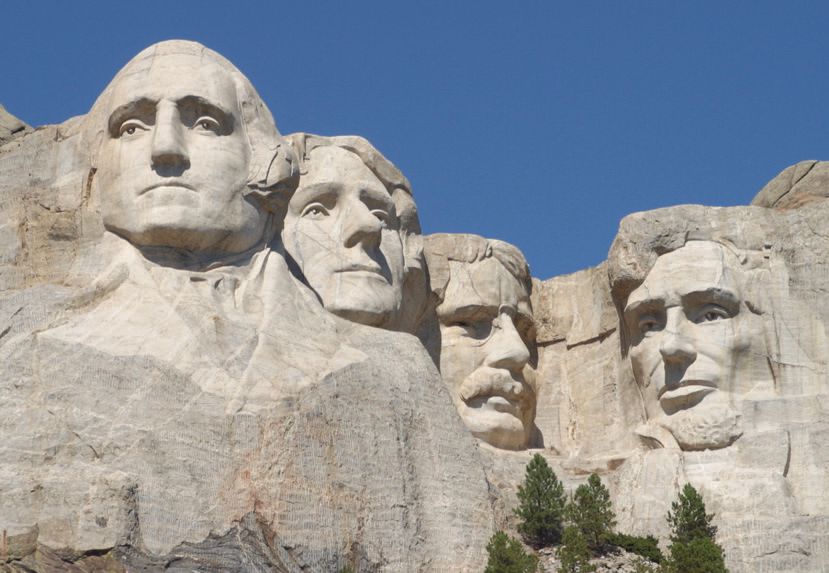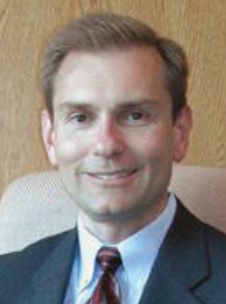‘Get busy and find out how to do it!’
Edward P. Salek, CAE, Executive Director | TLT Headquarters Report March 2014
A best-selling book about America’s 26th president offers six memorable lessons.

President Theodore Roosevelt urged people to stand by their ideals but leave room for moderation and pragmatism. His greatness earned him a spot on Mount Rushmore (from left): George Washington, Thomas Jefferson, Roosevelt and Abraham Lincoln.
www.canstockphoto.com
MY WINTER READING LIST INCLUDED Pulitzer prize-winning biographer and historian Doris Kearns Goodwin’s latest best seller,
The Bully Pulpit: Theodore Roosevelt, William Howard Taft and the Golden Age of Journalism.
I should explain a minor personal connection to Presidents Roosevelt and Taft, which played a part in selecting this book. While visiting New York City several years ago, I toured Theodore Roosevelt’s boyhood home on East 20th Street in the Gramercy section of Manhattan. About 30 years before that visit, I attended and graduated from William Howard Taft high school in Chicago.
This long (50,000 words) and complex book explores the social, political and economic history of the United States in the last decade of the 19th Century and into the early 20th Century. It also details the relationship between these two very different leaders who shared both a friendship and a rivalry. Goodwin’s biography makes it clear why Roosevelt is ranked as one of America’s greatest presidents and why his likeness is carved into the Mount Rushmore monument along with the faces of George Washington, Thomas Jefferson and Abraham Lincoln.
While few of us will ever record achievements likely to result in the erection of a monument, we can all relate to and learn from some of the personal characteristics that were so aptly described by Goodwin in her book. So let me present a few lessons for 2014, courtesy of Theodore Roosevelt (who much preferred the nickname TR over Teddy).
Lesson one: Bring a sense of energy, adventure and curiosity to everything you do. Most people know the story of Roosevelt’s heroics during the Spanish-American War with the Rough Riders. But did you know that he was the first president to travel outside of the continental United States while in office? This curiosity extended to technology. On Oct. 11, 1910, Roosevelt took a four-minute flight in a plane built by the Wright brothers, making him the first president to fly in an airplane.
Lesson two: Great sadness can be overcome. Roosevelt’s mother and first wife died within the same day and in the same house, a mere two days after his daughter was born. In his diary entry for that day, he wrote a large X on the page and then, “The light has gone out of my life.” Roosevelt, of course, went on to become a war hero, a president, a Nobel Peace Prize winner and one of the most beloved political figures in American history.
Lesson three: Make time to read and, if you are so inclined, to write. Roosevelt was an avid reader who consumed tens of thousands of books at a rate of several per day in multiple languages. Rumor has it that he would read books at his desk in the brief time between meetings and appointments. He also was the author of 40 books.
Lesson four: If you really want to understand a problem, get out of your office and go take a look for yourself. As New York police commissioner, Roosevelt walked the city in disguise to better understand problems from a street level perspective. What the future president saw eventually lead to reforms that improved the quality of life for thousands living in America’s largest city.
Lesson five: Stand by your ideals but leave room for moderation and pragmatism. While Roosevelt was a man of strong opinions who knew how to put up a good fight (boxing was one of his hobbies, even as president), he also knew the value of compromise as a path to getting things done.
He once said, “I thereby learned the invaluable lesson that in the practical activities of life no man can render the highest service unless he can act in combination with his fellows, which means a certain amount of give and take between him and them.”
Lesson six: This is my favorite, and it does not require an explanation. “Whenever you are asked if you can do a job, tell ‘em, ‘Certainly, I can!’ Then get busy and find out how to do it.”
This comment presents a golden opportunity to close with a message about the value of STLE. We are an organization that provides you, the member, with the resources to seize an opportunity from your employer or your customer by projecting the sort of bold spirit reflected in this quote from TR. Whether reading this magazine, participating in an educational Webinar or attending a local section meeting, we are the place where you can “get busy and find out how to do it.”
 You can reach Certified Association Executive Ed Salek at esalek@stle.org
You can reach Certified Association Executive Ed Salek at esalek@stle.org.